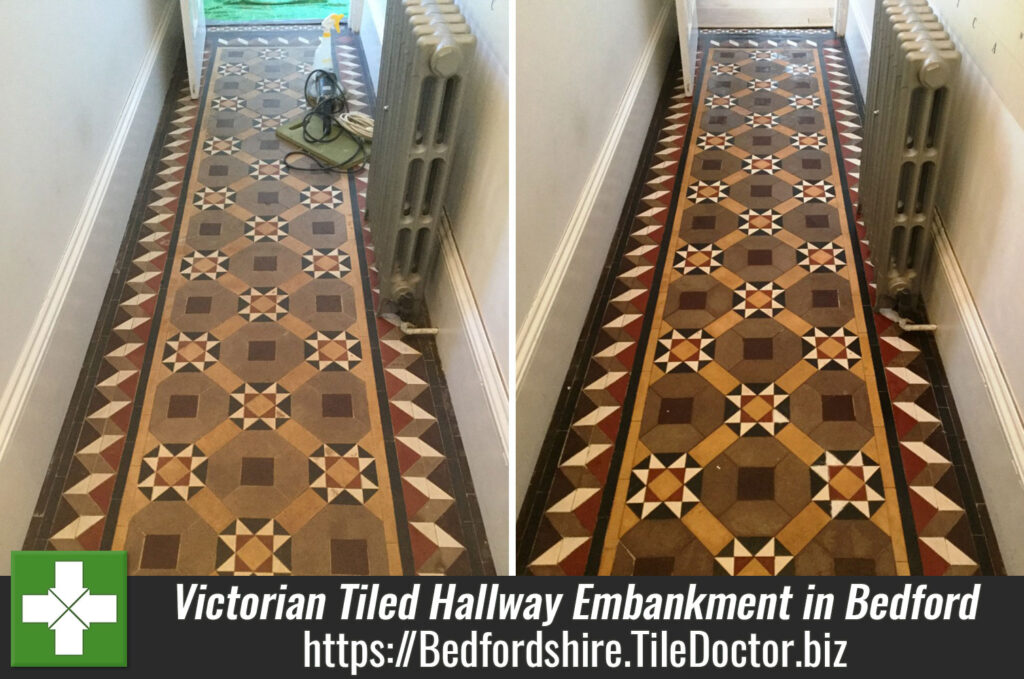The following photos show a lovely traditional Victorian hallway floor in a period property close to the Great Ouse river in the city of Bedford, a city with a rich history that dates back to medieval times.
The floor was in very good physical condition for its age but was very dirty due to not being sealed for many years allowing a build-up of soil to embed in the surface of the tiles. When this happens, we find general cleaning is no longer effective at thoroughly removing all the dirt and the result is a dull tiled floor that never looks its best.


Cleaning an Original Victorian Tiled Floor
My first course of action was to vacuum the floor to remove light dust and debris, this was then followed by applying a Tile Doctor Pro-Clean diluted with warm water. Pro-Clean is a strong alkaline tile and grout cleaning product that is safe to use on all types of tile and stone. The solution was decanted into a spray bottle and then sprayed onto the tiles working in sections of several metres at a time.
The Pro-Clean was left to soak into the tile and grout for about ten minutes before being agitated with a rotary machine fitted with a black scrubbing pad. The soiled solution was then rinsed off with water and extracted from the floor with a wet vax. The process was then repeated through the entire area.
Once the whole floor was treated in this manner I then switched to a new cleaning process for Victorian tiles that is now being taught at Tile Doctor. The process resurfaces the tile by applying a special diamond impregnated pad fitted to a rotary machine and lubricated with water. The pad is worked over the tiles in sections as before rinsing each section with water after the application of the pad. Once the last section was treated in this manner and rinsed I moved onto the last step in the cleaning process by giving the floor an acid wash which helps neutralise the tile and helps to combat salts rising through the stone.
To do this I applied Tile Doctor Acid Gel to the entire area, leaving it to dwell for a short period before rinsing off with water, extracting again with the wet vax and then leaving the floor to dry off overnight.
Sealing an Original Victorian Tiled Floor
I returned the following day to carry out minor repairs to small chips in the tile and also to replace missing and loose grout. This needed to set before I could seal the floor so once complete I left for the day which had the added benefit of allowing the floor to dry for another day. I also left a dehumidifier running on site to assist with the drying process.
On the third day, I returned to seal the floor with three coats of Tile Doctor Colour Grow, which is a matt finish impregnating sealer that occupies the pores in the tile protecting it from within. Colour Grow also has other advantages, it enhances the colours in the tile and it’s a breathable sealer which will allow any dampness in the subfloor to evaporate which is important for older floors that have no damp proof course.




Efflorescence (aka mineral salts) can be a problem with old floors that have no damp proof membrane or have seen water damage as white salts are deposited on the surface of the tile as the damp evaporates, this can especially be a problem with houses near rivers. Damp proof membranes are a relatively recent invention and only became mandatory in the 1960’s.